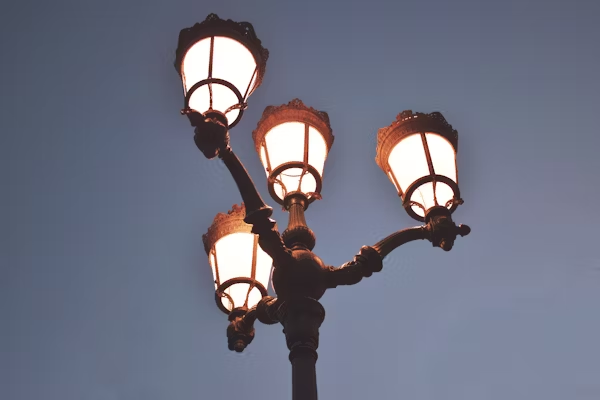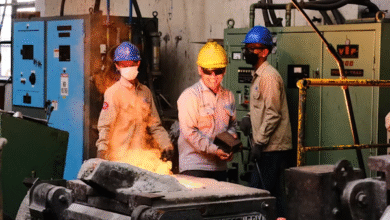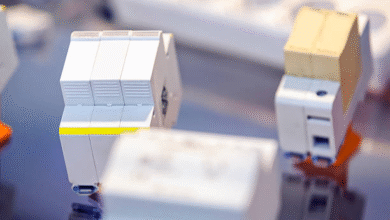History Of Street Light Technology LED and Street Lights Technology

The linear progress and improvement of the lighting industry can be dated back to the first traditional lights and now growing to LED lights. Street light manufacturers are now LEDs due to the evolution of technology. Such improvement brought many benefits like better cost savings, safety, and sustainability. In this article, the evolution of Technology improvement in Street lights would be discussed with emphasis on pre LED and LCD methods. Also other refracted technologies of lights like LED and recessed lights would be discussed.
Traditional Street Lighting: The Beginning of Illumination
Street Lighting is important in every urban area and so, a very useful feature. The first step to lighting streets was the use of gas, and so gas lamps. Incandescent bulbs replaced gas lamps which slowly replaced them. Bulbs were much better than gas lamps. Bulbs use less gas than and are efficient. However, bulbs are not the best option because they have a shorter lifetime. Servicing these was expensive so cheaper methods were adopted. It was not cost efficient to use this in fast growing cities.“However, through innovations, the industry started to seek for more efficient and sustainable options.” “The stage for the adoption of LED technology was the growing demand for modern street lighting whose visibility, lifespan and operating costs were improved.”
The Adoption of LED Technology on Street Lighting
“Unlike the HI-Pressure Sodium and Metal Halide Lamps and other conventional lighting options, LED technology was considered more efficient to its predecessors.”
“Street LED lights are more energy saving and conserved compared to the traditional street lights which invariably need to be replaced every few years.” “Municipalities and cities alike appreciate its economic value since it is capable of lasting over fifty thousand hours.” “More so, it provides improved adaptability and control over the light which enhances its brightness, which is a further advantage.”
Advantages of LED Street Lighting Compared to Other Options
The implementation of LED Street Lighting has created new benefits which includes:
- Energy Efficiency: Street LED lights have the ability to lower a city lights energy consumption by 50 percent compared to the older sodium or halide lamps. This lowered energy consumption greatly decreases the spendings of the city budget and private sector that operate the street lights.
- Longer Lifespan: LED lights have the ability to last 5 times more than older system street lights. This greatly decreases the replacement and maintenance that is frequently needed. This is a great advantage when talking about long term maintenance spending for businesses and city governments.
- Improved Brightness and Visibility: LED street lights have the ability to greatly increase the dispersed light that is emitted. This spending greatly increases the safety of the users of the road because it improves visibility to both pedestrians and drivers.
- Environmental Impact: compared to other lighting options, LED lighting has a more positive influence on the environment because there are no toxic substances like mercury in it. Also, energy saving with the implementation of LEDs has lowered the global carbon invasion.
- Customization Options: LED lighting manufacturers have the ability to adjust the street lights for different settings either by changing the color of the light or the brightness. This allows them to meet the demands from different places like busy crossroads and still residential areas.
Understanding the Differences between LED Downlight and Recessed Light
Each of recessed lights and LED downlights have a use-case where they provide the same type of focused light, but they do have differences in how they are used and designed. With respect to urban development and street lighting, both can be used, but the final selection of technology rests on certain criteria — placement in space, how the light needs to be positioned, and the type of lighting required, including aesthetic features.
LED Downlight
Spaces such as lobbies, corridors, and even the ceilings of certain commercial and residential spaces utilize LED downlights to provide general-purpose lighting. These lights are made to cast light in a downwards position and are able to provide sufficient light to make the area glow while avoiding any unpleasant glare. These fixtures, which utilize LED technology, are perfect to be used in civic spaces which are likely to make use of the light for a long time, as they provide high efficiency and a long lifespan at the same time.
Recessed Lighting
Recessed lighting consists of lights that are designed to fit within a wall or ceiling, offering a smooth, modern, and polished look. These lights provide better control over lighting direction and can focus on certain points of interest. Recessed lights provide situational lighting and can focus on street signs or unique architecture. Though these lights can be used outdoors, they are better suited for indoor use because of their installation restrictions.
When choosing between led downlight vs recessed light, the decision is mainly based on the effect needed. Recessed lights are used to light certain areas such as sidewalks or pathways while LED down lights are used for general street lighting.
Smart Integration and the Future of Street Lighting
As cities progress, the future of street lighting revolves around smart integration. Smart city projects use cutting-edge technologies, such as sensors and data, to improve urban living. Integrated street lighting can enhance urban energy use while providing remote control, data collection, and adaptive light.
Connected LED street lights can automate light intensity which makes LEDs far more economical than traditional street lighting solutions.
Conclusion: The Need for Innovation in Street Lighting
Technology and improvement surrounding the use of street lighting and the implementation of LED systems has improved energy efficiency and saved money while being more environmentally conscious. The use of LED street lights also allows the manufacturers to help foster the growth of innovative urban regions. It can be noted that whether the street lighting is in the form of recessed lights or downlights, energy saving and smart technology will dominate the future of street lighting.
As the adoption of urban Luminaires becomes widespread, Light manufacturers in the B2B business will be able to satisfy the ever-growing requirements of urban infrastructure. Hence, firms that are forward-thinking will stand to benefit more than others as the industry itself evolves.



